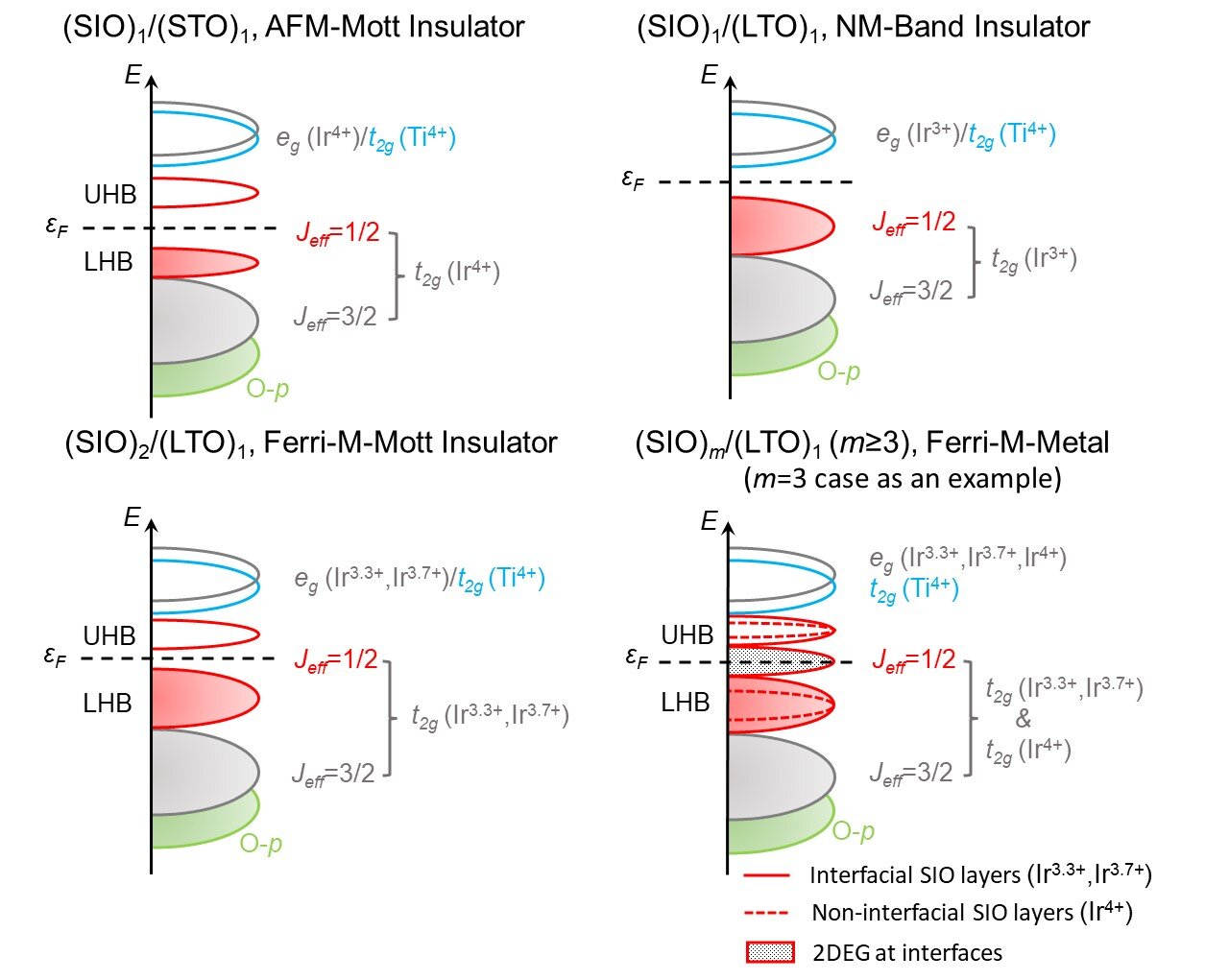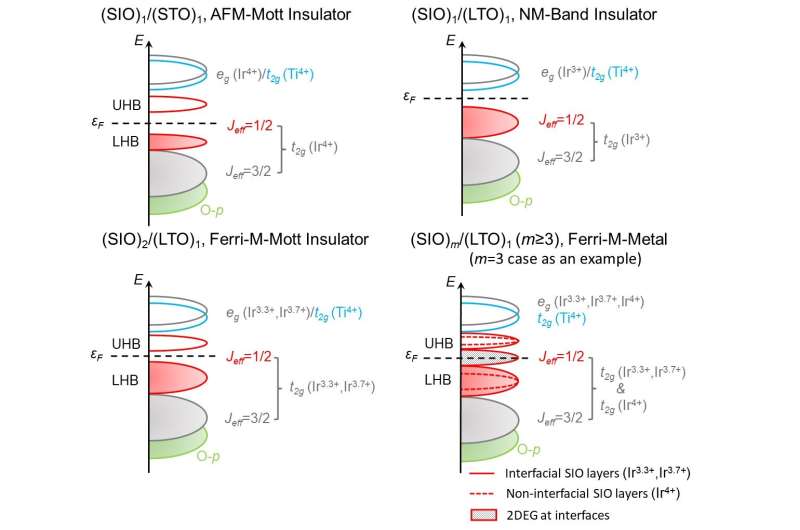
by Li Miao and Zhao Weiwei, Hefei Institutes of Physical Science, Chinese Academy of Sciences

Recently, Professor Yang Xiaoping’s research group at the High Magnetic Field Laboratory, the Hefei Institutes of Physical Science of the Chinese Academy of Sciences, discovered a tunable and controllable monoatomic layer two-dimensional electron gas (2DEG) localized at the heterointerface.
The research results were published in ACS Applied Electronic Materials.
The Mott insulator-metal transition is a key topic in condensed matter physics due to its potential for device applications and superconductivity when doped. In 5d iridates, the spin-orbit coupling (SOC) is much stronger than in 3d transition metal oxides, making it comparable to crystal field splitting and electron-electron interactions. This results in the Ir 5d-t2g bands splitting into Jeff = 3/2 and Jeff = 1/2 subbands.
Currently, artificial heterointerfaces techniques are widely employed to manipulate the electronic structure and properties of materials.
In this study, researchers explored the electronic properties of (SrIrO3)m/(LaTiO3)1 superlattices using density functional theory. They observed that an integer charge transfer occurs between LaTiO3 and SrIrO3, driven by the combined effects of interfacial polarity differences and oxygen octahedral distortions.
The number of transferred electrons on each Ir atom can be controlled by doping the A-site of LaTiO3 or varying the SrIrO3 layer number m, thereby modulating the oxidation states of Ir. This led to a variety of electronic states, including nonmagnetic band insulators, ferromagnetic metals, ferrimagnetic Mott insulators, and ferrimagnetic metals.
A mixed valence state emerges when there are at least two layers of SrIrO3. This leads to an insulator-metal transition when the SrIrO3 layer number m is greater than or equal to 3.
The most interesting thing is that the charge transfer and the formation of a two-dimensional electron gas (2DEG) only occur at the single atomic layer of IrO2 where the materials meet, regardless of the SrIrO3 layer thickness. This is different from the 3d LaAlO3/SrTiO3 system, where the 2DEG extends deeper into the material beyond just the interface.
These findings provide fresh insights into the development of novel nanoscale oxide electronic devices and the exploration of two-dimensional unconventional iridate superconductivity.
More information:
Miao Li et al, Tunable 5d-t2g Mott State and Monoatomic Layer Two-Dimensional Electron Gas Realized in Spin–Orbit-Coupled SrIrO3 through Heterostructuring, ACS Applied Electronic Materials (2024). DOI: 10.1021/acsaelm.4c01015
Provided by
Hefei Institutes of Physical Science, Chinese Academy of Sciences
Citation:
Researchers discover tunable 2D electron gas at heterointerface of 5d iridates (2024, October 15)
retrieved 16 October 2024
from https://phys.org/news/2024-10-tunable-2d-electron-gas-heterointerface.html
This document is subject to copyright. Apart from any fair dealing for the purpose of private study or research, no
part may be reproduced without the written permission. The content is provided for information purposes only.